People of African and Asian origins have long shared a cause in a hostile US
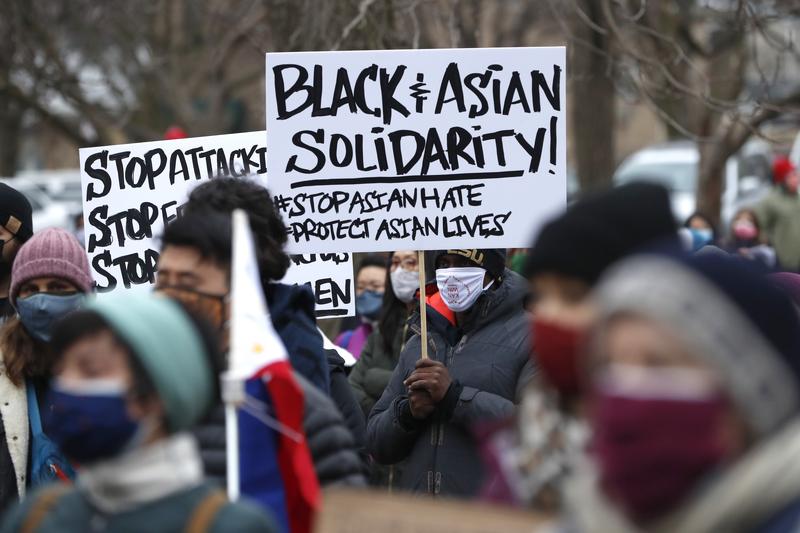 Expressions of solidarity between minority groups, such as at this rally in Chicago in March last year, have been growing. (SHAFKAT ANOWAR / AP)
Expressions of solidarity between minority groups, such as at this rally in Chicago in March last year, have been growing. (SHAFKAT ANOWAR / AP)
Helen Zia's childhood memories of events on Aug 28, 1963, have never left her. She was in Washington, DC, on a road trip with her father and a brother. "We were driving through DC on our way back home to New Jersey. I remember looking out the car window at so many black people, wearing their Sunday best clothing", recalls Zia, now long recognized as a campaigner who helped make Asian Americans aware of their rights in a nation where many viewed them with suspicion or hostility.
Back then, the 11-year-old had no idea that she was witnessing the largest public protest that the United States would see in the 20th century.
The March on Washington for Jobs and Freedom, or simply the Great March on Washington as it's known today, drew a quarter of a million people onto the streets demanding civil and economic rights for black Americans.
For Asians and blacks in America, it was the beginning of a continuing effort to reconstruct and reclaim lost history.
Tomie Arai, New York-based artist of Asian descent
In the crowd, which extended from the national capital's Lincoln Memorial all the way to the Washington Monument and beyond, were Horace Sheffield Jr, a rising black union leader, and his 9-year-old son Horace Sheffield III. The younger Sheffield is now the executive director of the Detroit Association of Black Organizations, which was set up by his father in 1979 to consolidate the city's groups representing black civil rights struggles.
"A great unifier" was how Zia, the daughter of Chinese immigrant parents, called the old man, whom she approached exactly two decades after the historic march, in 1983. The previous year, a 27-year-old Chinese American named Vincent Chin was bludgeoned to death in the industrial city by two baseball bat-wielding white autoworkers who reportedly had shouted to him: "It's because of you mother******* we are out of a job!" The abuse hurled at Chin conflated his Asian appearance with a topical issue of the time-the devastating impact the ascendant Japanese car industry was having on the country's "Motor City".
After pleading guilty to manslaughter, the two men were sentenced to three years' probation and a $3,000 fine by a county judge who saw no racial motivation in the killing. With the killers never seeing a prison cell, a group of mostly young people quickly came together to form the American Citizens for Justice, the first explicitly pan-Asian grassroots community advocacy group with a national scope. Zia was its press secretary.
"We immediately reached out to Detroit's black community, within which there's a deep understanding of what racism meant in America and for which Sheffield Jr was a godfather figure," she said. "A generation older, he came to our meetings where we made it very clear that this was not just about Asian Americans. He opened many doors for us, including to the powerful United Auto Workers union where part of the anti-Asian hate originated as a result of the huge layoffs from the production lines."
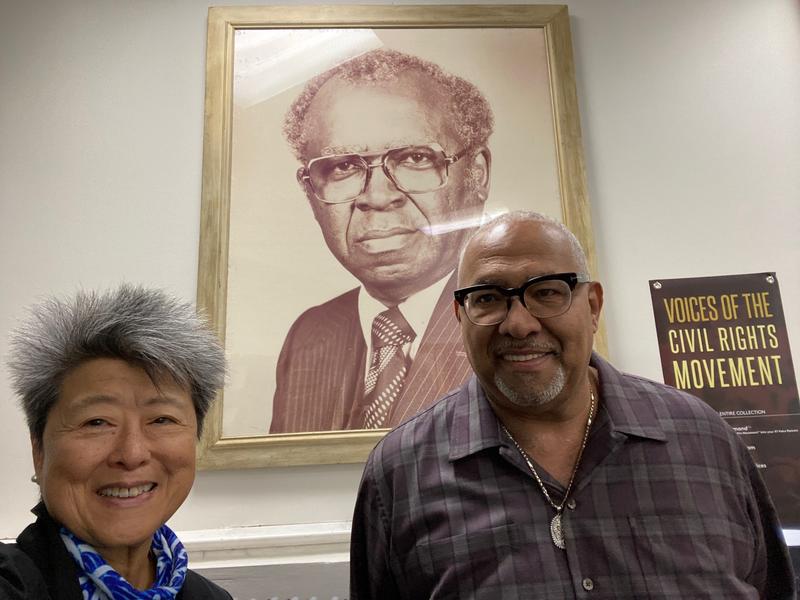 Campaigners Helen Zia (left) and Horace Sheffield III in front of a picture of Horace Sheffield Jr, whom Zia calls a great unifier. (PHOTO / HELEN ZIA)
Campaigners Helen Zia (left) and Horace Sheffield III in front of a picture of Horace Sheffield Jr, whom Zia calls a great unifier. (PHOTO / HELEN ZIA)
One of the questions raised during the encounters was whether Asian Americans had experienced genuine racism. "Those who thought Asian Americans had no legitimate place in the discussion of racism knew no history," said Horace Sheffield III, who recalled how his great-grandmother was freed from slavery at the age of 12 and how his grandparents, in fear of violence, fled Georgia in a Detroit-bound train.
For him, the parallels are remarkable. After the US made it illegal to import enslaved people from Africa in 1808, hundreds of thousands of indentured workers-"surrogate slaves" as Zia would call them-were brought in, sometimes forcibly, from Asia. Most came from China and India. During the ensuing "driving out" period, Chinese immigrants, seen as threatening to the white-dominated social order as the newly freed slaves, were subjected to massacres and lynching all too familiar to black people. By the time the 1882 Chinese Exclusion Act was passed to prevent-for the only time in US history-all members of a specific ethnic or national group from entering the country, what's known as the Jim Crow laws were being implemented in the southern states to enforce racial segregation. In practice, this meant Asians and black people were often lumped together.
"We were both victimized, racialized and criminalized throughout US history, the whipping boys and girls of the American society," said Horace Sheffield III.
Yet during her appearance on a popular African-American radio talk show, Zia was forced to confront the anti-black racism within her own community, and to explain why Asian Americans weren't simply trying to "ride the coattails" of African Americans. "We acknowledged very frankly the need to educate our community members on blacks' contribution to alleviating our pain," said Zia. "When the Chinese Exclusion Act was passed in 1882, a hundred years before the killing of Chin, one of its most vociferous denouncers was the great black American leader and abolitionist Frederick Douglass. And most of the Chinese immigrants who came after 1965 didn't know that they owed their very presence in this country to the black civil rights movement: both the Civil Rights Act and the Immigration and Nationality Act-the latter rendered the Chinese Exclusion Act obsolete-were passed within two years of the March on Washington.
"To those who asked where we were when the blacks were facing down police dogs and fire hoses, my answer was: 'We were there, we are there, we will be there'."
One person she had in mind was Grace Lee Boggs (1915-2015) who, two decades before Zia the former student activist from Princeton University came to Detroit to "learn what it meant to be an American in America's heartland", arrived at the burgeoning industrial city with her black political activist husband James Boggs.
"Politics of the time said Detroit is where the workers are. That's where you need to be," the daughter of a rich immigrant Chinese restaurateur told Korean-American documentary filmmaker Grace Lee, who was initially drawn to her story by their identical names.
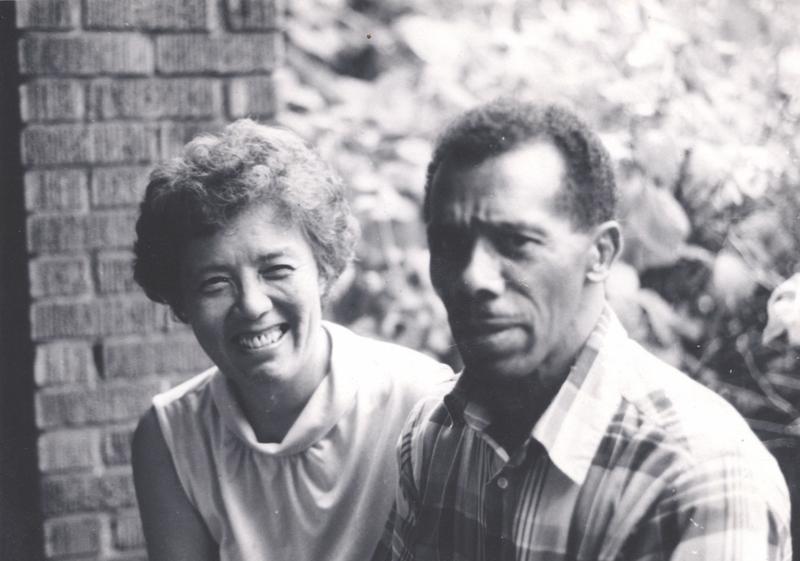 Grace Lee Boggs and James Boggs. The couple were prominent in efforts to bring communities together. (PHOTO PROVIDED TO CHINA DAILY)
Grace Lee Boggs and James Boggs. The couple were prominent in efforts to bring communities together. (PHOTO PROVIDED TO CHINA DAILY)
Changes needed
On the front page of her autobiography Living For Change, Grace Lee Boggs, recognized as a national Black Power figure of her time, wrote: "Had I not been born female and Chinese American, I would not have realized from early on that fundamental changes were necessary in society."
Back in the 1940s, it was her inability as a PhD-holding "Oriental" to land a decent job that led the young Grace Lee to live in a rat-infested basement in Chicago, which in turn brought her into contact with the black community for the first time. Later coming back home from her honeymoon with James Boggs, the couple had to sleep in their car since most motels refused to let black people in.
United in love and struggle, the two went on to co-author many articles on the black movement and help found the all-Black Freedom Now Party in the 1960s, with Lee being its only nonblack member. Two months before Martin Luther King Jr made his iconic "I Have a Dream" speech during the 1963 March on Washington, he led 125,000 people down Woodward Avenue in Detroit and talked about his dream of "one day right here in Detroit". Grace and James Boggs were among the organizers of the event.
"I think she came to the African-American community and movement because it spoke to her as being both anti-capitalist and anti-racist while embracing the full humanity of a people," said Grace Lee the filmmaker. "One black Detroiter told me that people were so accepting of Grace because she had brought her intellect, energy and organizing skills with her into the community at a time when black people were not seen as fully human and locked out of basic rights."
In Lee's 2014 documentary American Revolutionary: The Evolution of Grace Lee Boggs, the protagonist reflected on her early political activism: "I didn't think myself so much as Chinese American … because the Chinese (Asian) American movement hadn't emerged."
Yet far-reaching societal change was already afoot. By the end of the 1960s, anti-Vietnam War protests had rocked the US. Considered a fundamentally racist war by both black and Asian communities for the high death rate of black soldiers on the battlefield and the US imperialism it embodied, the war saw Zia joining her fellow high school students in walkouts and Horace Sheffield III chanting anti-war slogans in Detroit's Kennedy Square. The latter saw "people I grew up with on my block coming back in body bags".
"Young people were rising up globally," said Zia, pointing to the revolutions that had swept across Asia, Africa and Latin America. In 1955, Indonesia hosted the Bandung Conference, where representatives from 29 governments of Asian and African nations including the People's Republic of China gathered to discuss matters of common concern, decolonization and economic development.
"At the time, China talked about support for African countries in a way that resonated with the black people in America. And it had an impact on our community," said Zia.
Nowhere else was this impact more palpably felt than on the US West Coast, the landing place for most Chinese immigrants since the early 19th century. Between late 1968 and the first half of 1969, The Third World Liberation Front, a coalition of student groups representing black, Asian and Latin Americans, staged monthslong strikes on college campuses in California. These actions resulted in hundreds of arrests and, ultimately, more admissions for students from racial minorities and the establishment of ethnic studies in US universities.
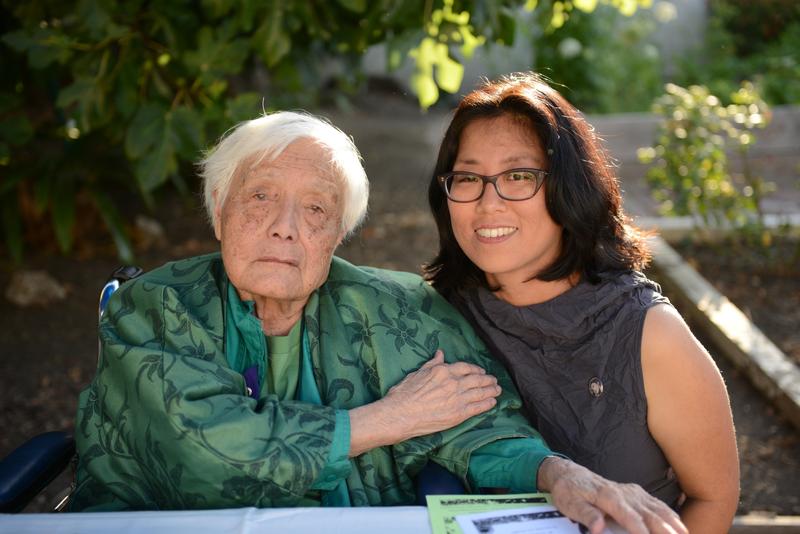 Korean-American documentary maker Grace Lee (right) with Grace Lee Boggs, whose story she told in a 2014 film. (QUYEN TRAN / LEELEE FILMS)
Korean-American documentary maker Grace Lee (right) with Grace Lee Boggs, whose story she told in a 2014 film. (QUYEN TRAN / LEELEE FILMS)
Continuing efforts
During the buildup to the strike, the Asian American Political Alliance was founded at the University of California, Berkeley, giving birth to a new political and demographic category-"Asian Americans".
"For Asians and blacks in America, it was the beginning of a continuing effort to reconstruct and reclaim lost history," said Tomie Arai, a New York-based third-generation Japanese-American artist who was commissioned in the 1990s by a committee of African-American leaders to create a mural memorializing the discovery of an African burial ground dating to the 18th century. It was unearthed during the construction of a federal government building in Lower Manhattan.
"The discovery is only part of a much larger burial ground where an estimated 20,000 remains of enslaved Africans lie, almost half of them children," said Arai. "When I researched for the project, there was very little written about slavery in New York, a city largely built by slave labor."
The commissioning of the mural came two decades after Arai and her Chinese-American husband got arrested during the 1974 Confucius Plaza protest in Manhattan Chinatown. The event saw African-American construction workers join their Asian-American counterparts to demand an end to discriminatory hiring practices in the industry.
Producing publicity materials for the milestone protest was New York's Basement Workshop, a center for the city's pan-Asian political and arts movement in the 1970s and 80s. Its members, including Arai, collaborated with black artists, writers and activists in developing community work and engaging in distinctive artistic expression.
"What's often missing in the discussion of solidarity is beauty… Artists can bring it out while bearing witness to the experiences of others," said Arai, who as a teenager rode the subway daily through New York's Harlem to her art school. In 1964, after an African-American boy was shot and killed by a white police officer, a riot broke out in the black neighborhood that served as a center of a major African-American cultural resurgence in the 1920s and 30s.
"The anger and resistance of the black community was very much a part of my growing up," Arai said.
The same anger had coursed through Arai's own family. At the beginning of the 20th century, right before an agreement between the US and Japan halted the flow of Japanese laborers to the US, Arai's great-grandfather arrived in San Francisco. Toiling for years as a tenant farmer, the old man's hope of one day purchasing his own farm was dashed by the 1920 California Alien Land Law, which prohibited the Japanese from owning property.
One of six siblings, Arai's father grew up attending segregated schools with black and Latino and fellow Asian students-school segregation in California lasted for over 100 years and didn't end until 1947.After Japan's bombing of Pearl Harbor during World War II, Arai's father, who was drafted into the US Army, was banned from visiting his family detained in Japanese internment camps on the order of president Franklin Roosevelt.
"My father was so embittered that postwar, he refused to return to California and settled instead in New York," said Arai, who grew up within the city's small but closely knit Japanese community and went to school with the children of Yuri Kochiyama (1921-2014), who together with Grace Lee Boggs are seen as the two most prominent Asian-American civil rights activists of their generation.
With her own father investigated and detained after the Pearl Harbor attack, and his death coming the day after his release, Kochiyama made it her life's mission to fight against what she saw as the unlawful incarceration of peoples of color, especially black people. After president Ronald Reagan signed a law to provide financial compensation to Japanese-American internment survivors in 1988, Kochiyama used this victory to advocate for reparations for African Americans.
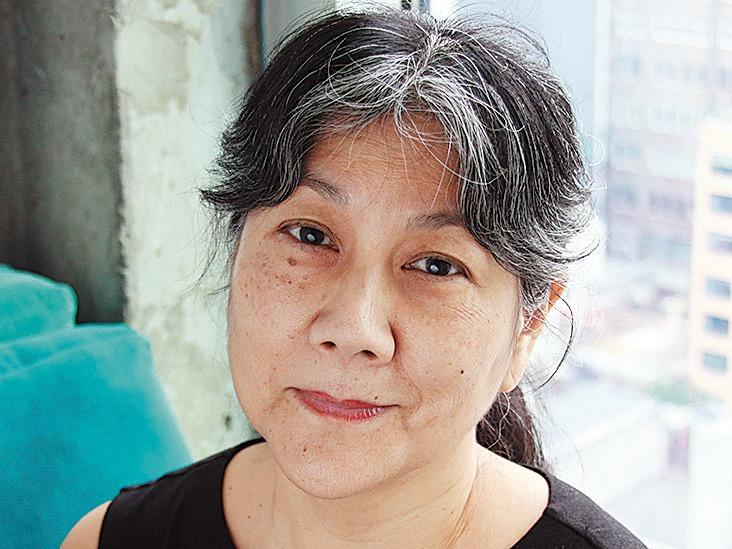 Tomie Arai, in working with minority groups, draws on her artistic expressions in raising awareness against racism. (PHOTO PROVIDED TO CHINA DAILY)
Tomie Arai, in working with minority groups, draws on her artistic expressions in raising awareness against racism. (PHOTO PROVIDED TO CHINA DAILY)
'Build bridges, not walls'
"Yuri bounded people in struggle and in family," said Arai, pointing to her own son-in-law, Yuri's multiracial grandson who was the result of a marriage between Yuri's oldest daughter and a black civil rights activist.
"Grand Central Station" was how friends dubbed Kochiyama's Harlem home, an open-door center of activism that Zia had visited to find someone living her own motto: "To build bridges, not walls".
In the 1980s, with the persistent efforts of the Asian-American and African-American communities in Detroit, Vincent Chin's tragic death finally garnered wide national attention. The killers were indicted by a federal grand jury, tried for violation of Chin's civil rights, and convicted, but eventually acquitted. Earlier this year, to commemorate the 40th anniversary of the event which catapulted the Asian-American movement to a postwar high, Zia got together with Horace Sheffield III, who recalled how his late father told him that "the best way to get other people to join forces with you is to come to their rescue".
Arai learned that in 1963. A 14-year-old attending summer camp, she helped paint signs for older campers who were to board buses to join the March on Washington, where that 9-year-old Horace Sheffield III, whose father had formed a friendship with Martin Luther King Jr, was selling buttons to marchers. One of those memorial buttons from that day is now in Arai's keeping, proof that "I was there in spirit".
Reflecting on the long and tortuous history of Asian-black solidarity, with its own highs and lows, Horace Sheffield III turned to King, the visionary giant who had mesmerized him and who cited Mahatma Gandhi, that "little brown man "from Asia, as the ultimate inspiration for his nonviolent struggles.
"We must live together as brothers or perish together as fools," King said.


